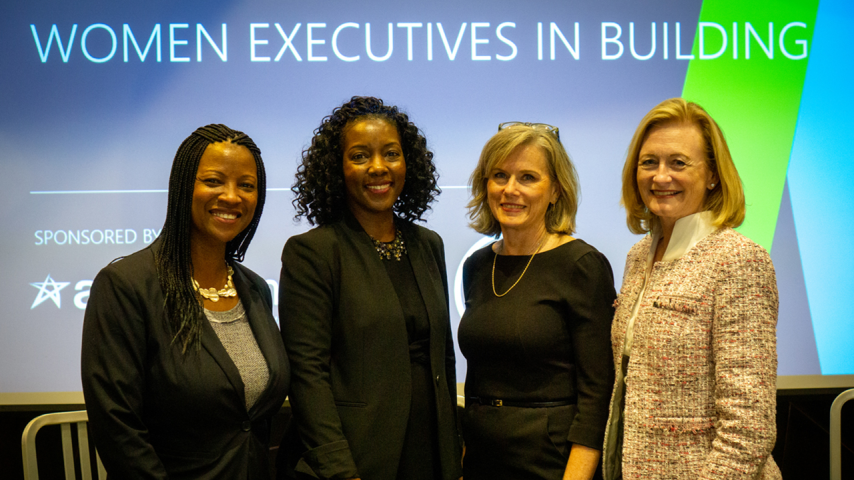
It’s not every day that you gather a room full of female executives to talk about tough issues like diversity, inclusion, and management in the nonprofit built environment.
But that’s exactly what happened Friday, Oct. 4, when the National Institute of Building Sciences hosted the first Women Executives in Building Summit.
“It starts with us,” said Lakisha A. Woods, President and CEO of NIBS. “We have to talk with each other. Fifty-one percent of this country is female and over 90% of the building industry is male – there are not enough of us at this table.”
Woods was joined by a strong panel of CEOs: Paula Glover, of the American Association of Blacks in Energy; Andrea Rutledge, with the Construction Management Association of America; and Dawn Sweeney, of the National Restaurant Association. The event was held at the restaurant association headquarters.
“Within an industry and even cross-industry, we don’t work together even though we have the exact same problem,” said AABE’s Glover.
Some of the issues discussed include balancing work and family, reaching career counselors and youth in high school and college to recruit into our industry, and whether companies are doing a good job taking care of women entering the workforce.
Building a Lasting Legacy
When Sweeney took over the helm of the National Restaurant Association in 2007, she was the organization’s first female president.
At the end of 2019, she plans to retire and says she’s proud to leave the group in “far more effective hands.”
Sweeney is talking very specifically about the association’s culture and environment.
Sweeney maintains that while restaurants are a “wonderfully diverse industry,” it’s taken some time for board representation of the national organization to catch up.
Today, 40 percent of the restaurant association’s board is made up of people of color, and 50 percent of the board are women.
Moving the Built Industry Forward
When Woods began leading NIBS in December 2018, she said the most attractive part of the job was its opportunity.
We are conveners, so we bring together the industry and find solutions to common problems.
“This is the path forward,” Woods said. “I love that our members impact where we live, work, and play. It’s not just talking about what the challenges are, but you also have to talk about solutions.”
One thing that has worked for the American Association of Blacks in Energy is a “signing day” for young people going into trades.
“We formalize a signing day,” Glover said. “High school students [need] to feel value no matter what their path is. … Storytelling also is very important. Young people aspire to what they see.”
For women in construction, it’s imperative to “send the elevator back down,” said CMAA’s Rutledge.
“It is our obligation to send the elevator back down for the next person,” she said. “You have to make a path.”
In addition to nonprofit leaders, NIBS will open the 2020 summit to female business owners and C-suite leaders across the built environment. Follow us on social @bldgsciences and Facebook for the latest on updates.




